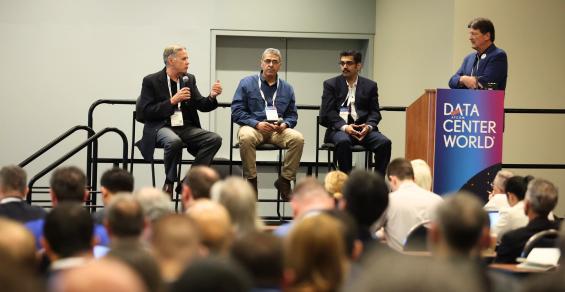Who doesn’t want to have their cake and eat it too? Last week, attendees of Gartner’s IT Infrastructure and Operations Management (IOM) Summit got the recipe in regard to managing their IT systems.
Analysts Debra Curtis and Ronni Colville introduced the theme of “bi-modal IT” in their keynote and it popped up over and over again at the conference. Put simply, I took “bi-modal IT” to be a directive from a top-flight IT analyst firm for organizations to try some of the more dynamic, agile approaches to running their IT systems while not completely abandoning more conservative, waterfall-oriented methods for more traditional portions of their environment.

By acknowledging both parts of IT—“the fast part and the slow part,” as they called it onstage—Gartner is walking a fine line and encouraging big companies to do the same. But make no mistake, change is in the air.
Easing into disruptive change
Gartner certainly did give a stamp of approval to the more conservative elements of an organization and the “we’ve always done it this way” approach. That sounds like something that would enable IT operations teams at big companies to sigh with relief as they go back to business as usual, but I also heard a call for change.
Gartner made the case, too: For example, a huge 42% chunk of respondents to its CIO survey (2,339 CIOs from 77 countries representing $300 billion in IT spend) said they disagreed with this statement: “The IT org has the right skills and capabilities in place to meet upcoming challenges.” Uh oh.
Gartner highlights DevOps as a smart direction
So what should companies do to get their IT operations up to speed? Much of the content at the IOM Summit pointedly encouraged a non-traditional and often disruptive approach, specifically talking about DevOps:
- DevOps dos & don’ts: DevOps was front and center, including a session from Cameron Haight talking about how to go from theory to practice, with cautionary tales of what not to do (what Cameron called “anti-patterns”). “The goal of DevOps is not to create a new set of elite ninjas,” he said, but to change the culture of an organization. Sometimes that requires setting up a new, DevOps-specific organization as a starting point.
- Manage core IT org conflicts: George Spafford recounted learnings from his Phoenix Project book (co-written with Gene Kim and Kevin Behr) and hit upon the core conflict of IT organizations. Folks who are aligned closely with the business, said George, push to move faster to enable the business. Folks aligned with IT operations want to protect the business, and push to move slower. I don’t think anyone in the midst of rolling out an application would disagree, but how an organization resolves this conflict will determine how much of the new IT approaches it will tolerate.
- Highlight accountability: Jim O’Neill, CIO of HubSpot, led a great session recounting his company’s success with DevOps, which he said enabled IT to help the firm grow from 1,150 customers to more than 12,000 customers over the past eight years. He advised the audience not to be afraid to “let go” of the old way of doing things, but to be careful not to “separate accountability from responsibility.”
IT operations is, more than ever, about teamwork
Surprisingly, many of the most prominent sessions at Gartner IOM weren’t about technology. Nor were they about different approaches to development or operations. Instead, they addressed how to work with people and how to drive change in an organization.
Professor Eddie Obeng’s frenetic (and most amusing) keynote walked the whole room through the emotions of getting people to accept change (Hint: make them believe it’s their idea). Analyst Ed Holub brought that home in his session about IT operations teamwork. “Every part of infrastructure & operations is becoming a team sport,” said Holub. “There is very little you can do effectively by yourself. Teamwork is the key ingredient to infrastructure & operations’ success.”
All in all, the Gartner IOM Summit mixed these organizational basics with strong forward-thinking vision. And, while Gartner did leave conservative organizations an out, many of the sessions seemed to be clearly telegraphing that change needs to come to IT organizations that want to help drive their business forward.
“Bi-modal IT” sounds like a strategy for easing into that change without abandoning everything that came before. Even conservative companies should jump at the chance, even if only in a limited way. Next time around Gartner may not be so subtle.
Cake image courtesy of Shutterstock.com.
This post also appears on the New Relic blog.










